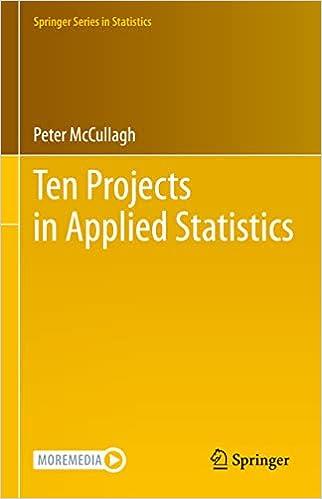In Exercise 14.10, the null hypothesis of no treatment effect (H_{0}: tau=0) is the left endpoint of
Question:
In Exercise 14.10, the null hypothesis of no treatment effect \(H_{0}: \tau=0\) is the left endpoint of the parameter interval \(\tau \in[0,2 \pi)\). Explain why this is not a boundary point in the parameter space.
Data From Exercises 10
Suppose that the observations \(Y_{1}, \ldots, Y_{n}\) in a two-arm randomized design are independent bivariate Gaussian with mean vector \(\left(\mu_{1}, \mu_{2}ight)\) for units in the control arm, and
\[
E\left(Y_{i} \mid \mathbf{t}ight)=\left(\begin{array}{l}
\mu_{1} \cos \tau-\mu_{2} \sin \tau \\
\mu_{1} \sin \tau+\mu_{2} \cos \tau
\end{array}ight)
\]
for units in the active treatment arm. The covariance in both cases is \(\sigma^{2} I_{2}\); the parameter \(\mu \in \mathbb{R}^{2}\) is unrestricted, while \(\sigma>0\) and the treatment effect lies in \(0 \leq \tau<2 \pi\). By expressing the sample averages for each treatment arm as complex numbers, show that \(\hat{\tau}=\arg \left(\bar{Y}_{0}ight)-\arg \left(\bar{Y}_{1}ight)\) is the maximum-likelihood estimate of the treatment effect. Find the maximum-likelihood estimate of \(\sigma^{2}\).
Step by Step Answer:






